In case you weren’t already aware, or chosen to actively ignore it until the law, society and Mother Nature herself forces you to submit, motorcycling’s electric future is coming… and it will be here to stay. At least, until Elon Musk figures out how to convert egotism into fuel.
For those that have lifted their head out of the sand for a moment, you’ll have noticed electric power is of course already here and it is spreading, albeit sporadically and broadly at either end of the scale in the scooter industry or up in the premium echelons where you can save the planet by destroying your bank account.
Compared to four wheels though, the uptake on two-wheels remains rather paltry, the sacrifice of giving up that sound, that feel and - for the most part - those looks consigned to the next decade’s problem for many.
It’s a level of reluctance that leaves motorsport in an awkward position, both now and in ten years time.
On the one hand, motorsport should be utilised as the litmus test for innovation that will one day filter down onto the road and be the platform to give electric a more engaging image.
But then, while electric will become mandatory for all new motorcycles sold from around 2035 onwards, does anyone really see the MotoGP of 2035 comprising a grid of muscular, snarling Ducatis, Yamahas and KTMs et al. that 10mins before the start of a race were jostling with iPhones for a wall socket (or something like that…)?
Probably not, and perhaps not for years afterwards either. It’s a conversation team bosses have been deftly avoiding (translate: blissfully ignoring) in the hope we just accept it won’t happen and move on.
It’s a stance, therefore, that could help cultivate a bigger, more enticing platform for MotoE in the future.

All it takes is a spark
It’s easy to hate on a series like MotoE, but the criticisms - the races aren’t very long, they make an odd wheezing sound, the bikes look a bit dumpy by comparison - are basic.
In fact, the super sprint duration often ensures MotoE races are a breathless blur of action, it’s cool to hear the tyres squealing and spinning up for once and this year’s new Ducati V21L is simply a Panigale with a ‘Dad bod’, which is no bad thing…
It has come a long way since its awkward first laps back in 2019 too. What began as a championship hastily organised by the FIM to prove it did in fact love the environment (even just a little bit) has blossomed into a competitive, value-added extension of the grand prix race weekend.

With season five heralding the start of MotoE’s Ducati era, the series took another step forward looking svelter, slicker and racier, while riders were full of praise for the way the V21L handled and was reliable.
While there are still three years to go on Ducati’s tender as control bike supplier, hopefully plans are already underway for MotoE to move onto the next level come 2027 and open up to other manufacturers to join the party.
Indeed, though supplying a single bike with a single powertrain has value in bringing out the best in the riders, the EV sector is innovating at an extraordinarily quick rate, so much so the electric motorcycles of 2027 will likely be in a different world to today’s Ducati.
As for whether the buying public will be up to speed by 2027 remains to be seen, but an open formula MotoE featuring manufacturers goading each other onto the next big engineering advancement is surely going to speed up that process.
Moreover, if the FIM and Dorna are reluctant to bite the bullet on integrating greener innovations into the MotoGP regulation framework, it could therefore pave the way for MotoE to grow in both size and status on the grand prix programme as a zeitgeist, radical-thinking complement to the headline show.

Which manufacturers could enter MotoE?
Though Dorna wouldn’t like to admit it, there isn’t exactly a queue of manufacturers looking to enter MotoGP any time soon. In fact, it’s not a queue since there are no manufacturers currently looking to enter MotoGP.
From the big costs involved, to the laborious development work needed just to get on the grid, to the seasons of pain-staking adjustments just to find those few tenths of a second to get off the back row, MotoGP is a commitment that guarantees a hefty sum of cash with no guarantee of success.
While the development of electric tech isn’t cheap either, since all manufacturers will need to at least soon get their head around the finer details, a MotoE campaign is both better value and arguably more relevant for your average consumer than MotoGP ever will be.
As such, it has the power to entice new names into the grand prix fold to - in theory - take on Ducati and its - by then - well-proven V21L.
Triumph stands out as the manufacturer best positioned to give MotoE a go. The British firm already has a broad presence in the paddock via its supply of engines to the Moto2 class, while it has dabbled in the sportier side of electric power with its attractive TE-1 sportsbike concept.
While it has repeatedly turned down Dorna’s advancements to join MotoGP in the past, BMW is also a standout option. The firm’s Motorrad arm - much like its main four-wheel business - has been one of the more proactive in developing electric solutions and - also much like its main four-wheel business - it is not afraid to think out of the box and then re-style the box in a trendy (weird) way.
Erstwhile bike suppliers Energica wouldn’t be far behind the curve either given its sportier business model, while bosses have stated they would have preferred to have been replaced by an open formula format, rather than Ducati.
With the Pierer Group already prominent in MotoGP, Moto2 and Moto3 with its KTM, Husqvarna and GasGas brands, it stands to reason that a sideline in MotoE would appeal too, most likely with its Scandi-cool brand, Husqvarna.
Then of course there is,Harley-Davidson - or, rather, Livewire - the mainstream brand that blazed a trail years before others joined it.
And not forgetting the Japanese ‘Big 4’ with Honda and Yamaha already only a hop, skip and jump away over in the MotoGP paddock, while Suzuki - having insisted its decision to quit MotoGP was to syphon resources into EV development in the first place - could return to kill two birds with one stone. As for Kawasaki, while its abrupt exit back in 2009 left a bitter taste in Dorna’s mouth, it would be a major coup for MotoGP to secure the involvement of a WorldSBK powerhouse.
Point is, while developments in MotoGP tend to err on the safer side of revolutionary, the potential in MotoE’s future is almost boundless. Not only that, MotoE’s future could be very, very exciting.


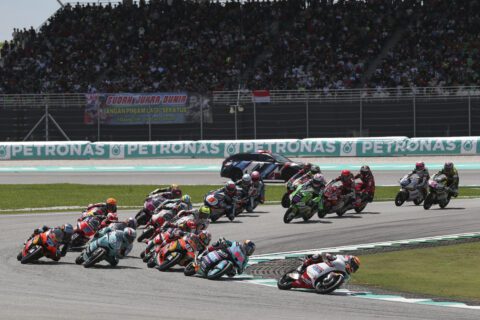
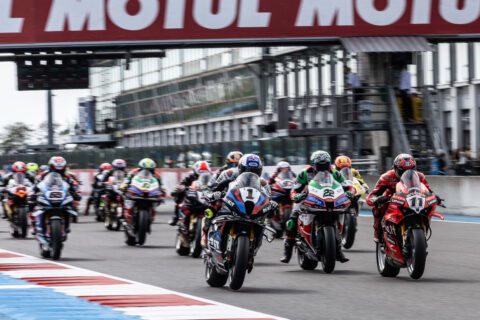
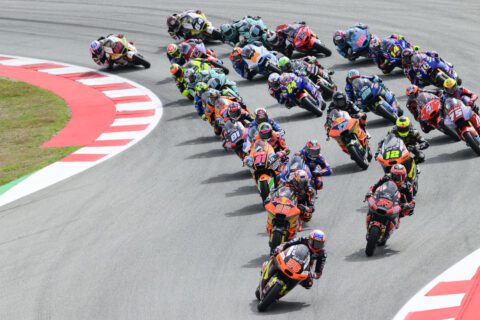
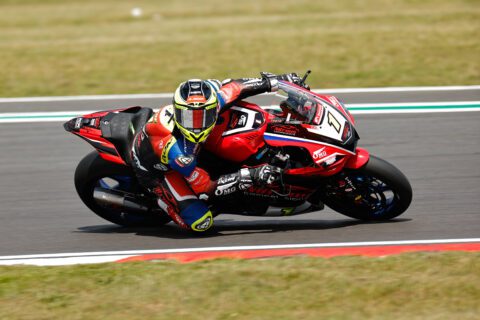
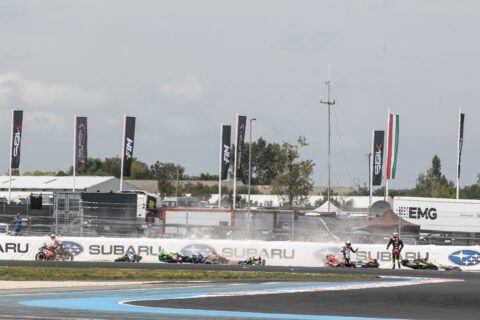
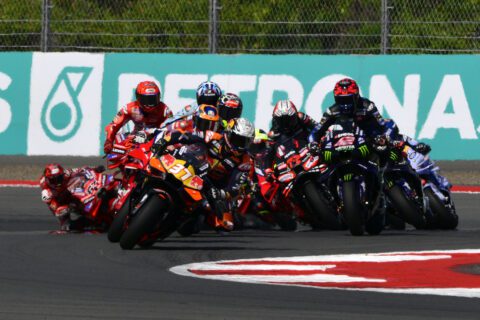
![Shane Byrne, Monstermob Ducati, 2003 WorldSBK, action [Gold & Goose]](https://bikesportnews.com/wp-content/uploads/2025/07/Shane-Byrne-Monstermob-Ducati-2003-WorldSBK-action-Gold-Goose-480x272.jpg)

